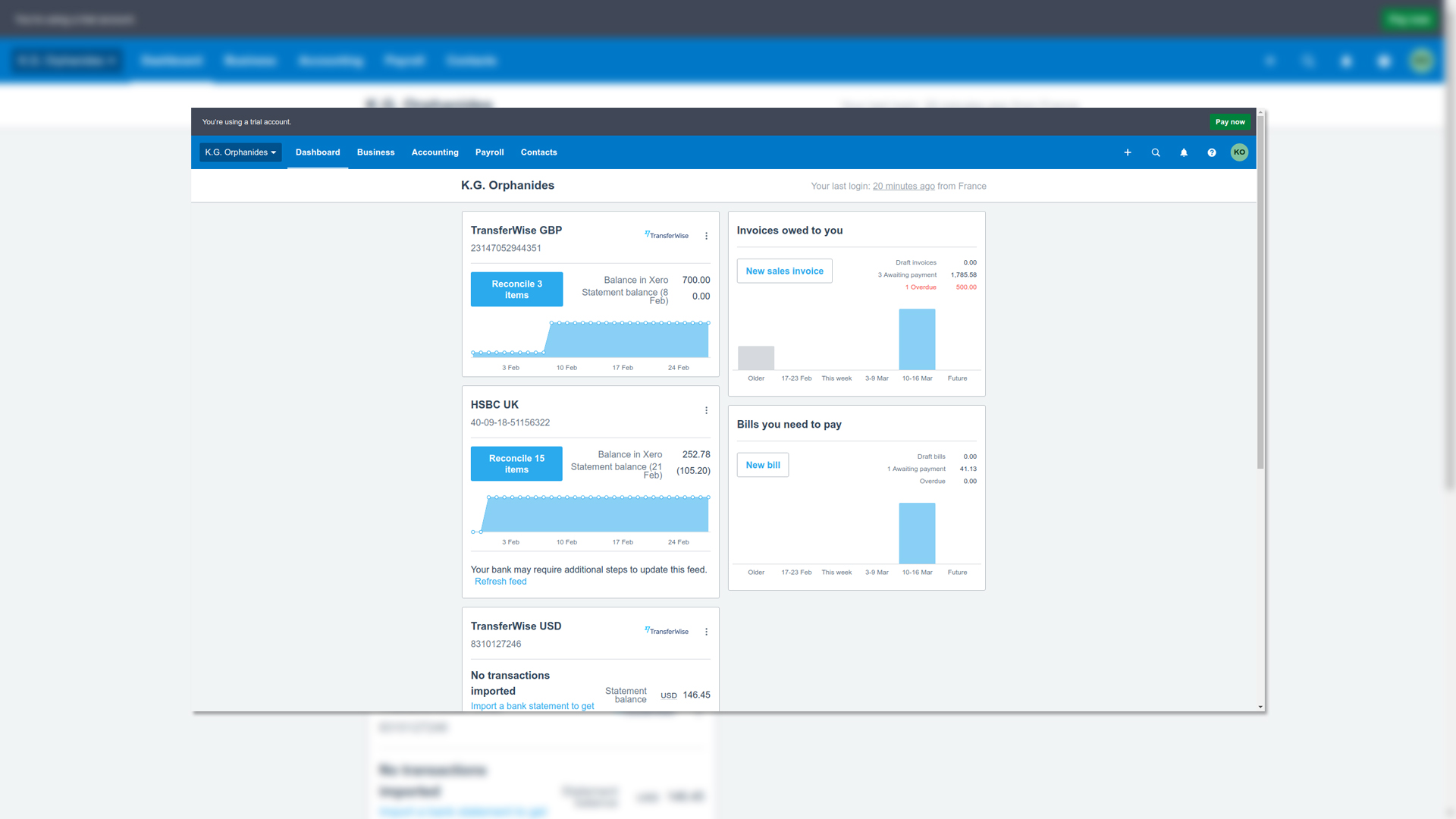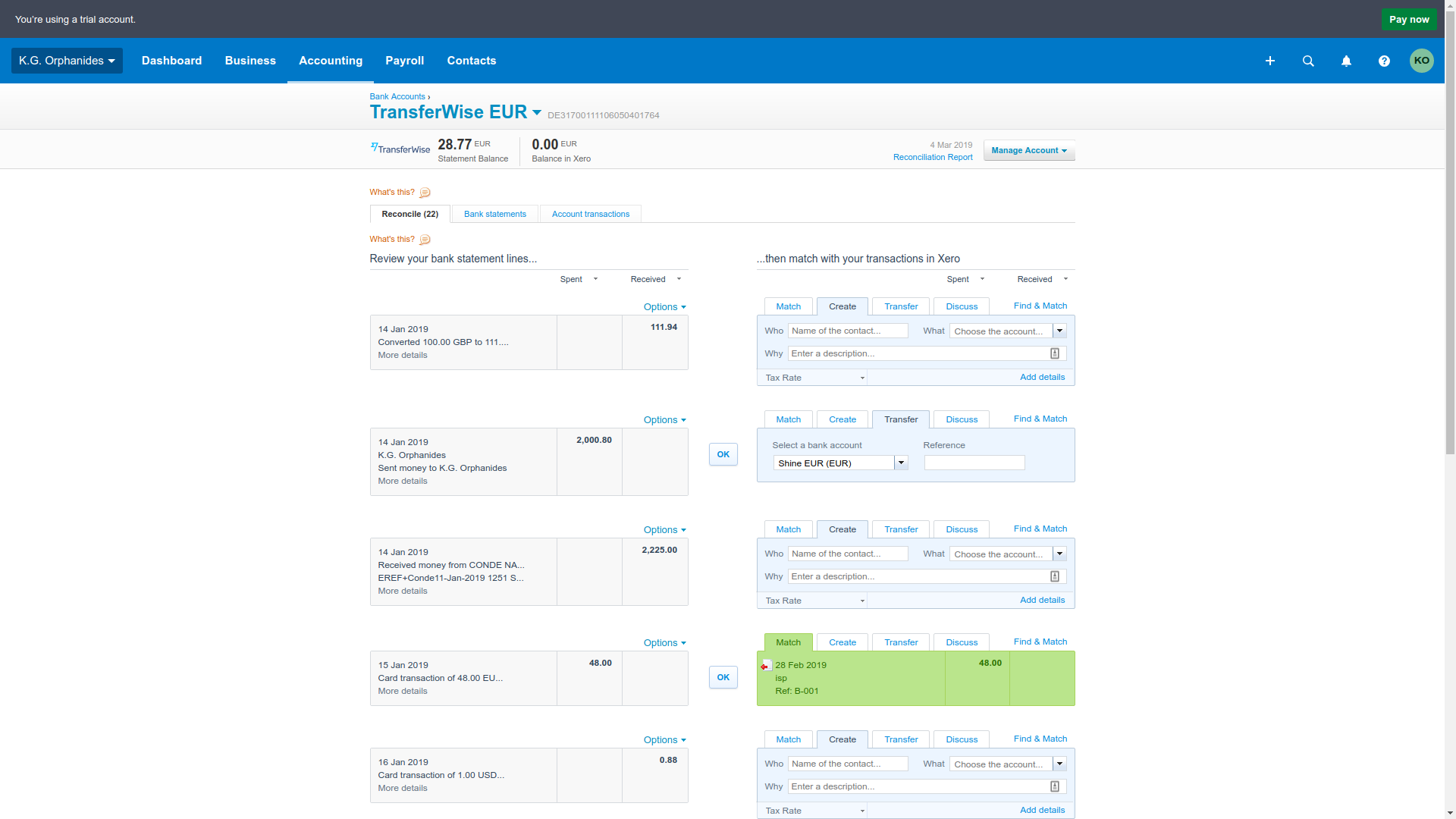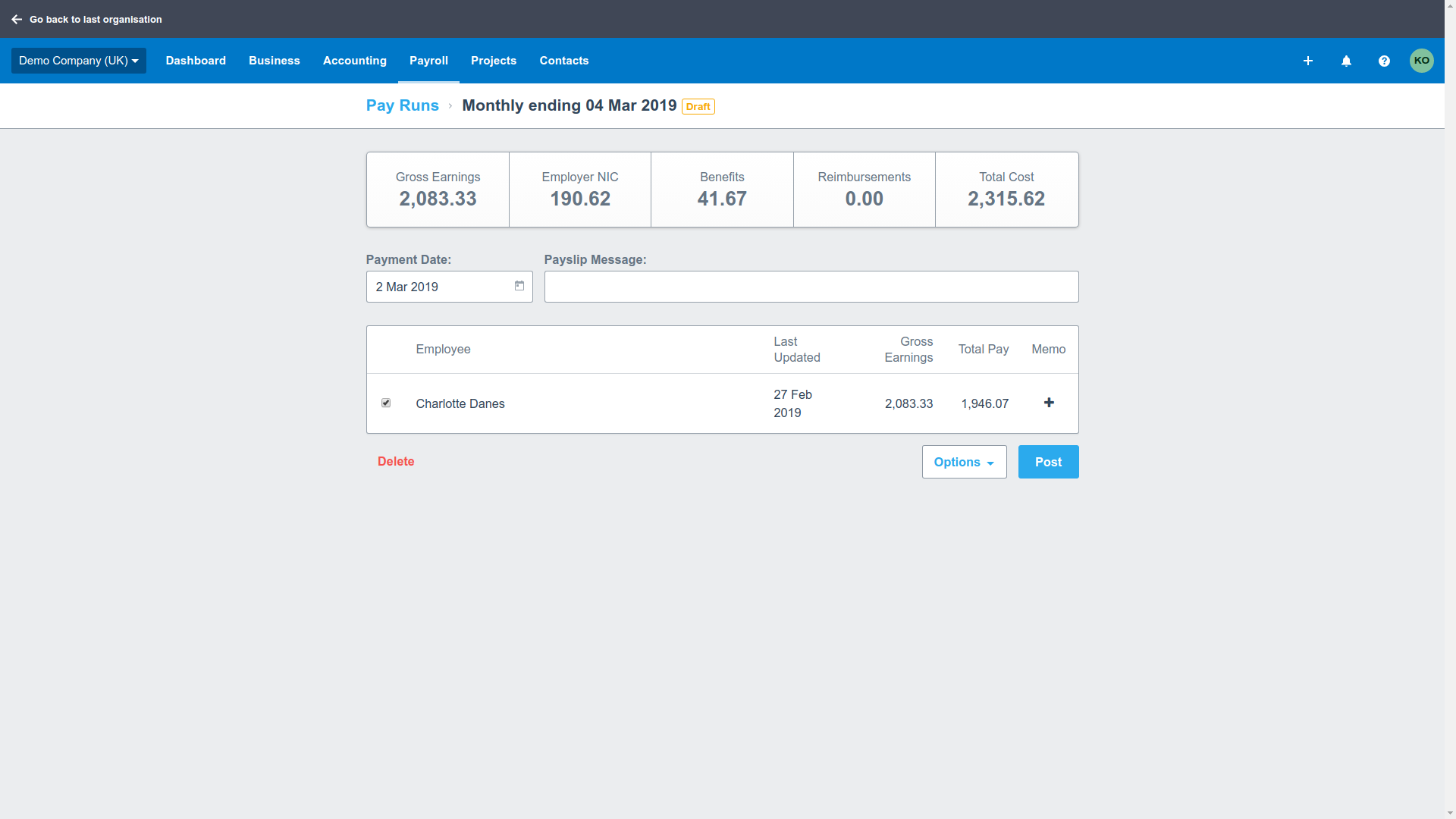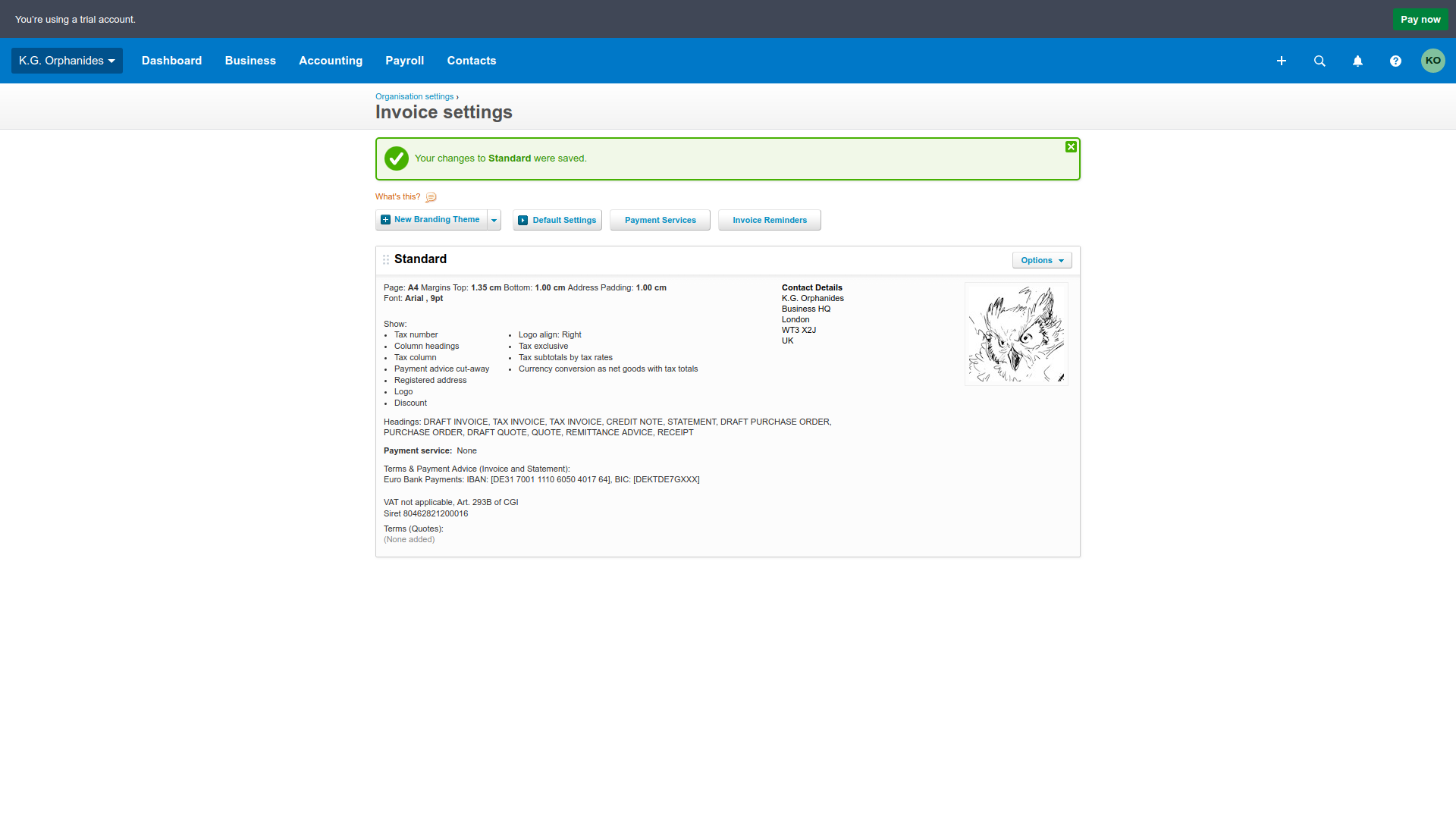Xero review: Xero to (almost) hero
Comprehensive cloud accounting that's particularly well suited to sales-based businesses

Xero is very capable, with a wide range of features and excellent support. However, its top subscription tier is among the more expensive you'll find and its interface feels a little old-fashioned due to small font sizes and the use of Flash for some graphs.
-
+
Wide range of features
-
-
Payroll is charged separately; More expensive than many rivals

New Zealand-based cloud accounting specialist Xero is geared up to support HMRC's new Making Tax Digital VAT payment scheme - which becomes mandatory for all UK businesses with turnover above the 85,000 VAT registration threshold from the 1 April 2019.
Xero is among the more expensive SaaS accounting suites around, with three tiers targeting businesses of various sizes. Xero Starter costs 10 per month as standard but severely limits the number of transactions you can process every month: you can send just 5 invoices, enter 5 bills and reconcile 20 bank transactions. This means that it's only suitable for the very smallest of businesses.
Priced at 22 per month, Xero Standard removes those limits, while for 27.50 per month, Xero Premium adds multicurrency support for SMEs that do business overseas. New subscriber discounts are frequently available for all tiers.
Unlike some of Xero's rivals, all three tiers support online VAT submission to HMRC. Bolt-on features are also available at levels, including Payroll at 1 per employee per month, Projects at 5 per user per month and Expenses at 2.50 a month for each user. You can invite your accountant to access your books, and any bolt on service that you want to add, free of charge.
Xero review: Getting started
When you sign up to Xero, you're prompted to add a few details about your company and then taken to the main dashboard, where a guided setup wizard awaits you.
You're asked a few simple questions to configure your financial year, whether you want to stick with Xero's default chart of accounts categories or import your own from a previous accounting suite, and are invited to connect your bank to directly import transactions.
The Add Bank Accounts screen - also available via the Bank accounts screen in Xero's Accounting menu - allows you to connect accounts from a large number of financial institutions that do business in the UK, including PayPal and both business and personal services from the usual high street banks.
However, although a number of online-only banks such as Revolut, TransferWise and HSBC's well-established First Direct are represented, some of the current wave of digital challenger banks don't appear. ING, Monzo, and Shine are among those currently missing, as are foreign banks.

If your account uses two-factor authentication, you'll have to generate a login code every time you sync its transactions with Xero. Otherwise, they'll be synced automatically every day. If your bank doesn't come up when you search Xero's list, you can just select "Add it anyway", enter your sort code and account number, and manually upload your statements in CSV format.
If you have a foreign bank account, you'll have to extract the account number and sort code from its IBAN to set it up, after which you can just upload statements as for any other non-connected account.
With your accounts added, you're next prompted to enter your balances as they were on the date that you want Xero to work from - the beginning of the current month by default. For foreign currency accounts, you'll have to - slightly obtusely - double-click on the balance field and then add both the balance and confirm the exchange rate you wish to use.
Once you've imported some bank transactions, Xero's tutorial wizard sends you to reconcile them: match them up to your expenses and invoice payments. Unlike some rivals, such as QuickBooks, Xero doesn't try to automatically classify transactions based on their description or the company involved, which means that your first reconciliation could be quite time-consuming.
Xero review: Invoicing
The next stop on the guided set-up process is particularly useful: adding unpaid invoices and bills to pay. This is an important step when moving your business to any new accounting suite, but it's nice to have it made explicit. To complete the invoices, you'll also need to enter your organisation's contact details as prompted.
You can either enter all your outstanding invoices manually or download a CSV template to help you upload them en mass. To help balance your books, you should also add any invoices that have been paid within the period covered by the bank transactions you imported earlier.
Note that, when using the template, you have to enter a unit number and amount for each invoice rather than simply entering the total in order for the import to complete. While you can conveniently opt to save imported client details when doing a bulk invoice import, if you're going to create your initial invoices manually, you should set up your Contacts and invoice template - in your Organisation settings - before.
Helpfully, Xero also provides a free portal that your customers can use to view and even pay their invoices immediately via PayPal.
Xero review: Staff, payroll and tax
If you have employees, you'll be prompted to add them and set up your payroll accounts towards the end of the guided account configuration process - Xero Payroll costs 1 per employee with a minimum fee of 5 per month.
Once you've entered each staff member's basic data - name, date of birth, address and binary gender - you're prompted to fill out a standard range of information, from employee number, start date, NI number and national holiday group before you can go about setting up their tax and pension data.

Xero can help you calculate and submit PAYE tax, national insurance contributions and pension filings in the process of managing and paying your staff. There's a full range of human resources options here, including a request system for time off, complete with support for statutory shared parental leave.
When it comes to VAT, Xero will automatically put together your return based on your month's transactions and, at the click of a button, file it with HMRC.
Xero review: Time, inventory and expenses
Once you've created a payroll calendar for your employees, they can submit timesheets that can be used to calculate pay and integrated into optional project management systems. Xero also supports inventory tracking; you can monitor stock levels of items you buy and sell automatically as you enter bills for your purchases and invoice customers for your sales.
There's a full expenses system - a bolt-on feature charged at 2.50 per user per month - which allows your staff to easily submit claims. You can set it up to use Xero's receipt analysis, where staff take photos of receipts for their expenses and these are sent back to Xero for automatic analysis. Alternatively, if you'd rather not have the processing done on Xero's end, you and your staff can enter the information manually.
As with most online services, there's an app marketplace, featuring a range of free and paid-for tools to help you connect to third party services, including payment providers, CRM, timesheet and project management tools. You can also connect other Xero services, notably Projects and WorkFlowMax for project management.
Xero review: Interface
While Xero's main dashboard and menus are clear, as are some of its overview pages such as the Payroll interface, many of its configuration pages look a little outdated due to tiny fonts and text entry areas. They're not particularly comfortable to work with on a standard 1080p monitor, let alone higher-resolution displays.
Elsewhere, we found visible raw HTML code visible in an inventory tracking sheet. Another problem is the service's use of Flash - long depreciated and disabled by default in most browsers - to produce graphs and charts for its sales summary reports.
By comparison, the Xero mobile app looks great and is really easy to use. It doesn't give you access all the features of the web app, but provides you with key tools to monitor your business's financial health, add contacts, record bills and receipts and create quotes and invoices on the move.

Xero also runs free webinar tutorial sessions that you can sign up for, covering everything from linking your bank accounts to HMRC's new Making Tax Digital scheme and how it works with the software.
Xero review: Verdict
Xero is a solid and reliable accounting tool - if not always a particularly attractive one, largely due to inconsistent formatting that sometimes looks a little poor on modern displays. We liked the attention to detail in the guided setup process, as well as the integrated inventory system, although Payroll is a bolt-on extra.
Xero among the more expensive accounting tools you could subscribe to: it costs more than Sage and includes fewer quality-of-life flourishes than comparably-priced rival Quickbooks. The Starter plan is particularly limited by an improbably low allowance of monthly invoices.
Xero's good at what it does, and is particularly well tailored to sales-oriented businesses that need basic stock management built in, but it's not our favourite cloud-based accounting solution.
Verdict
Xero is very capable, with a wide range of features and excellent support. However, its top subscription tier is among the more expensive you'll find and its interface feels a little old-fashioned due to small font sizes and the use of Flash for some graphs.
Get the ITPro daily newsletter
Sign up today and you will receive a free copy of our Future Focus 2025 report - the leading guidance on AI, cybersecurity and other IT challenges as per 700+ senior executives
K.G. is a journalist, technical writer, developer and software preservationist. Alongside the accumulated experience of over 20 years spent working with Linux and other free/libre/open source software, their areas of special interest include IT security, anti-malware and antivirus, VPNs, identity and password management, SaaS infrastructure and its alternatives.
You can get in touch with K.G. via email at reviews@kgorphanides.com.
-
 ‘Phishing kits are a force multiplier': Cheap cyber crime kits can be bought on the dark web for less than $25 – and experts warn it’s lowering the barrier of entry for amateur hackers
‘Phishing kits are a force multiplier': Cheap cyber crime kits can be bought on the dark web for less than $25 – and experts warn it’s lowering the barrier of entry for amateur hackersNews Research from NordVPN shows phishing kits are now widely available on the dark web and via messaging apps like Telegram, and are often selling for less than $25.
By Emma Woollacott Published
-
 Redis unveils new tools for developers working on AI applications
Redis unveils new tools for developers working on AI applicationsNews Redis has announced new tools aimed at making it easier for AI developers to build applications and optimize large language model (LLM) outputs.
By Ross Kelly Published
-
 Google layoffs continue with "hundreds" cut from Chrome, Android, and Pixel teams
Google layoffs continue with "hundreds" cut from Chrome, Android, and Pixel teamsNews The tech giant's efficiency drive enters a third year with devices teams the latest target
By Bobby Hellard Published